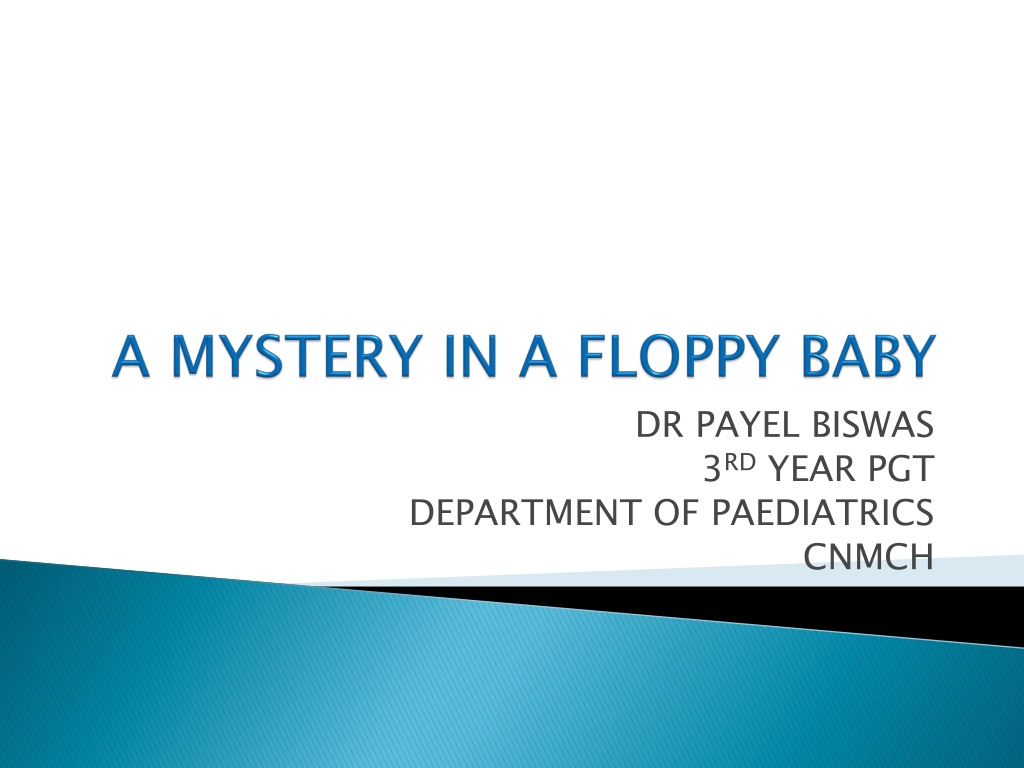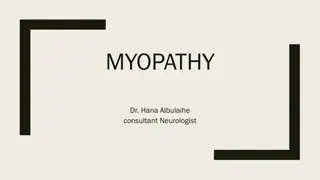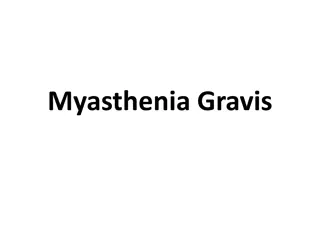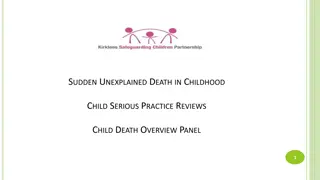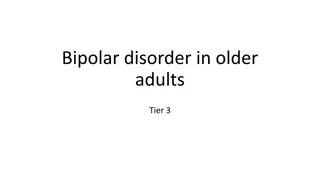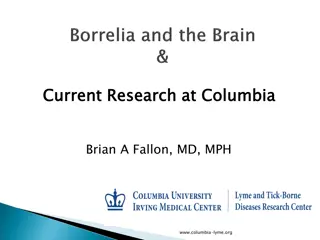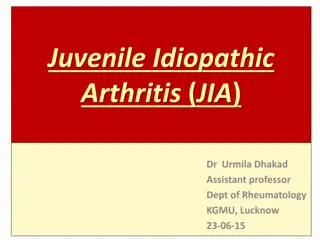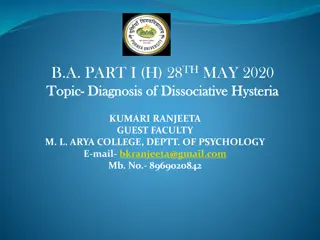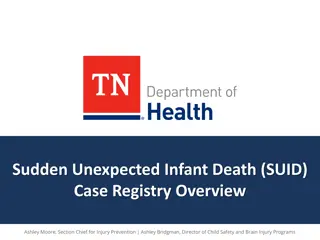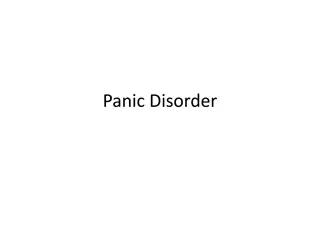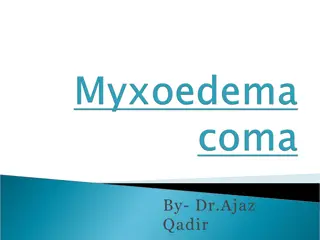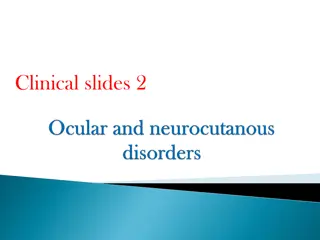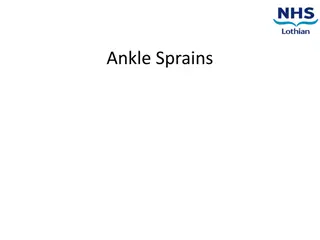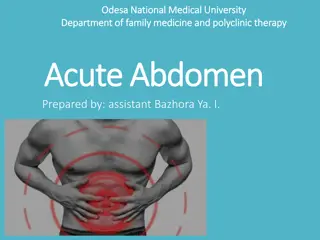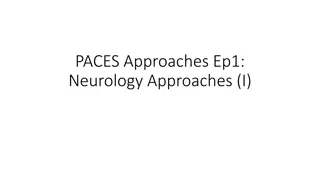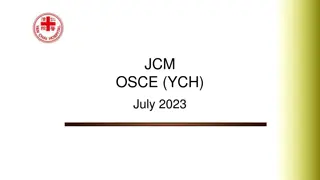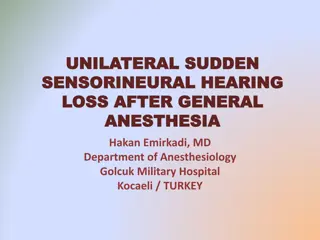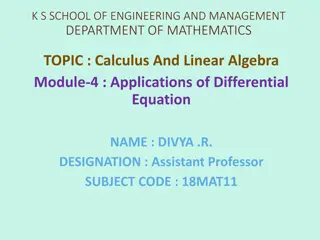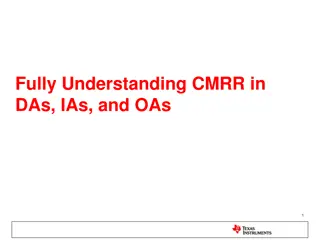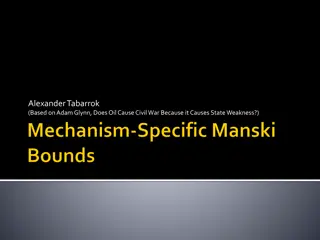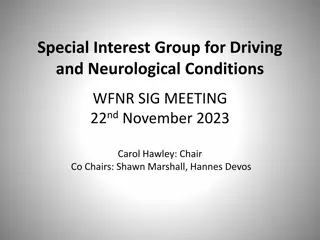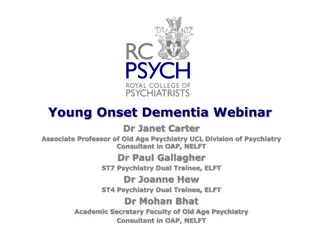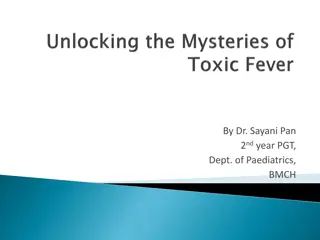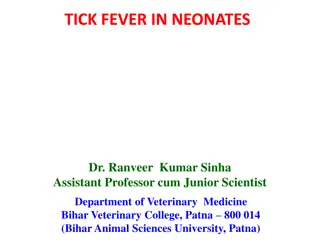Differential Diagnosis of Infant with Sudden Onset Weakness and Neurological Symptoms
A 2-month-old infant presented with sudden onset weakness in all four limbs following an upper respiratory tract infection. Clinical findings include froglike posture, diminished tone in all limbs, absent reflexes, and cranial nerve involvement. Possibilities include brainstem encephalitis, myelitis, neuromuscular disorders, and more. Diagnostic workup includes CBC, LFT, electrolytes, imaging studies, and genetic testing.
Download Presentation

Please find below an Image/Link to download the presentation.
The content on the website is provided AS IS for your information and personal use only. It may not be sold, licensed, or shared on other websites without obtaining consent from the author. Download presentation by click this link. If you encounter any issues during the download, it is possible that the publisher has removed the file from their server.
E N D
Presentation Transcript
DR PAYEL BISWAS 3RDYEAR PGT DEPARTMENT OF PAEDIATRICS CNMCH
2 month old baby presented with sudden onset weakness of four limbs for 4days following an URTI Inability to hold neck momentarily in prone position Weak cry and mild difficulty in feeding No retention of urine No history of recent vaccination.
Non consanguinous marriage. Birth history- FTND and cried immediately after birth. No history of less foetal movement in antenatal period. No history of maternal neuromuscular disease. No history of sibling loss. Received routine immunisation: at birth and 6 wk. Able to lift neck 45 degree in prone position, social smile was present.
Froglike posture Tone diminished in all 4 limbs Pull to sit showing head lag Deep Tendon Reflexes-absent Power-2/5 in LL and 3/5 in UL 9thand 10th cranial NV involvement. No respiratory difficulty or paradoxical movement. No fasciculation Head circumference-between 50thto 75thcentile
WHAT ARE THE POSSIBILITIES ? WHAT ARE THE POSSIBILITIES ?
Intracranial Intracranial- - brainstem encephalitis. Ant horn cell Ant horn cell-Polio and non polio entero viral myelitis. Spinal cord Disseminated Encephalomyelitis. Spinal cord-ATM, Anterior Spinal artery syndrome, Acute Radicles neuropathy, MLD, Leigh syndrome, porphyria. Radicles and peripheral nerves and peripheral nerves- GBS, post rabies vaccine Neuromuscular junction bite,Tic paralysis. Neuromuscular junction- Myesthenic crisis, drugs, snake Muscle paralysis, dermatomyositis. Muscle- - hypokalemia, hypophosphatemia, familial periodic
CBC, LFT, Electrolytes CPK and LDH TSH Serum AMMONIA and LACTATE Stool EMG and NCV study Lumber puncture Blood for genetic marker for SMN gene MRI of brain and spine
CBC, LFT, Electrolytes CBC, LFT, Electrolytes WNL CPK CPK and LDH LDH- WNL TSH TSH- WNL Serum AMMONIA and LACTATE Serum AMMONIA and LACTATE- - WNL Stool Stool-no virus is isolated from stool. NCV reduced CMAP amplitude and significant prolonged F wave latency in both median, ulnar and common peronial nerves suggestive of demyelination NCV- increased distal motor latency with demyelination.
LP cell count 10 /cubic mm. LP protein increased(205mg/dl) with total Blood for genetic marker for SMN gene report pending. Blood for genetic marker for SMN gene- - EMG EMG-WNL. MRI brain and spine MRI brain and spine WNL
Acute onset flaccid paralysis due to Guillain Barre Guillain- - Barre syndrome of AIDP subtype. syndrome of AIDP subtype.
How will you differentiate between GB syndrome and floppy infant?
Some common features are frog leg posture with profound weakness, absent DTR bulbar involvement frog leg posture, , hypotonia Muscle atrophy, hypotonia with profound weakness, absent DTR, Muscle atrophy, bulbar involvement . Floppy infant(central) may be present with social and cognitive impairment with social and cognitive impairment in addition to motor delay. Dismorphic floppy infant ( central hypotonia) Dismorphic facies facies, history of seizure , history of seizure may be present in Feeding difficulty present since birth since birth in floppy infant. Weakness progresses over days to month in AFP whereas in floppy it is usually static or very slowly progressing except few central hypotonia. Confirmed by CSF and Electrophysiological study.
Autoimmune disorder, thought to be a postinfectious polyneuropathy. Involves only motor nerves, but sensory and autonomic nerves may be involved. Affects people of all age. Not hereditary.
Onset of symptoms follows nonspecific GI or respiratory infection. GI infection- Campylobacter jejuni, Helicobacter pylori. Respiratory infection- Mycoplasma pneumoniae. Systemic Zika virus. After vaccination-against rabies, influenza, conjugated meningococcal vaccine. Others-mononucleosis, Lyme disease, cytomegalovirus.
Acute inflammatory demyelinating polyradiculoneuropathy(AIDP) Acute motor axonal neuropathy(AMAN) Acute motor and sensory axonal neuropathy(AMSAN) Miller Fischer variety
Bickerstaff brainstem encephalitis Polyneuritis cranialis Pharyngeal-cervical-brachial variant Acute sensory neuropathy Acute ophthalmoparesis Paraparesis.
1.Progressive weakness in legs and arms 2.Arreflexia (or decreased tendon reflexes). Additional symptoms 1.Progressive phase lasts days to 4wks 2.Relative symmetry 3.Mild sensory symptoms/signs(not in AMAN) 4.Cranial nerve involvement,espiacially B/L facial muscle weakness. 5.Autonomic dysfunction. 6. Muscle pain. Additional symptoms:
CSF- increased number of mononuclear/ PMN cells (>50cells/microlitre). Severe pulmonary dysfunction with little or no limb weakness. Severe sensory signs with little or no weakness. Bladder/bowel involvement at onset. Sharp spinal cord sensory level. Marked, persistant assemmetry of weakness. Persistant bladder/bowel involvement. Slow progression of illness without respiratory involvement.
EARLY STAGE OF ACUTE ILLNESS: admission for observation MILDER WEAKNESS AND SLOW PROGRESSION may be managed with observation for stabilisation and spontaneous remission. MILDER WEAKNESS AND SLOW PROGRESSION- - SEVERE/ RAPIDLY PROGRESSIVE 0.4g/kg/day 1gm/kg/day SEVERE/ RAPIDLY PROGRESSIVE IVIG 0.4g/kg/day for 5 5 consecutive days or 1gm/kg/day for 2 2 days IVIG Plasmapheresis drugs Plasmapheresis and/or immunosupressive drugs if IVIG is ineffective. immunosupressive
Steroids in pain. Steroids-no effect in weakness but may help SUPPORTIVE MANAGEMENT: respiratory support prevention of pressure sores nutritional support pain management prevention of DVT treatment of secondary bacterial infections.
No response or continuous deterioration after initial IVIG Treatment related fluctuation (TRF) Acute onset CIDP
20% cases have persistent disability ( The Lancet. Volume 366,2005) Long term prognosis does not depends upon NCV study Axonal group has slower recovery. Relapse occurs in 5% . Follow up study showed 87.5% children had full recovery or minimum symptoms at the end of 1 yr and 95% recovery at the end of 2 yrs. (Veena Kalra etal, IJP, 2009) Mortality rate around 11.5% (Veena Kalra et al, IJP,2009)
Hypotonia is not synonymous with weakness. Not all hypotonic infants are floppy. Meticulous history taking may avoid confusion in diagnosis of floppy and AFP in infants. Previously healthy infant presented with progressive ascending symmetric paralysis with areflexia and hypotonia always rule out GBS irrespective of age. Irrespective of severity during acute phase good long term recovery can be expected in most children.
